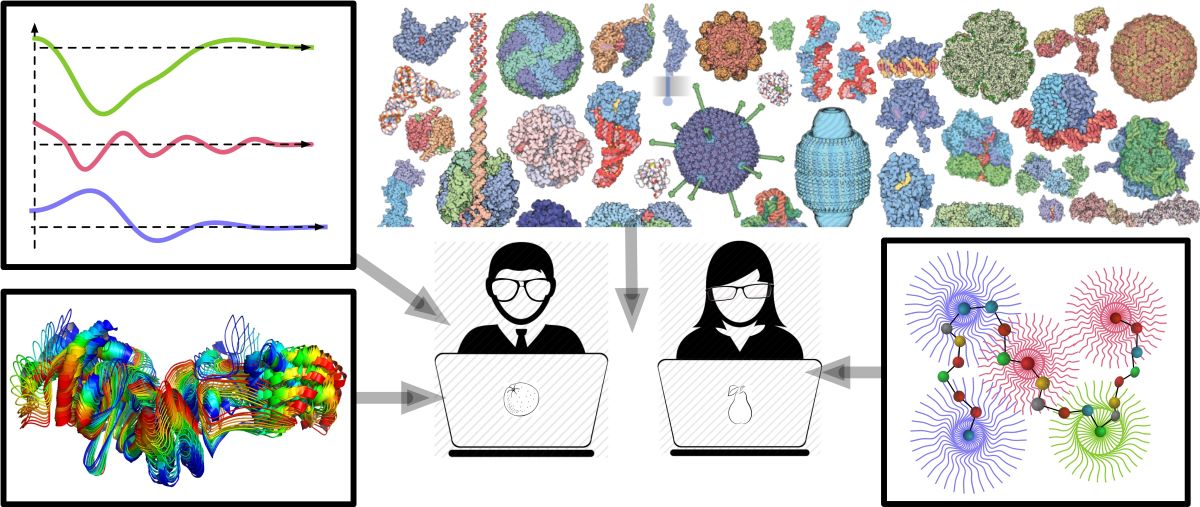Speaker
Description
Computational design of peptides that can (a) recognize/bind to specific protein interfaces and (b) self-assemble into nano-scale architectures such as β-sheet-based fibrils (amyloid) have potential applications in healthcare and advanced biomaterial fabrication. Screening sequence space via experiments to discover peptides that bind to proteins and self-assemble is challenging, although some progress has been made in the former category. This presentation focusses on novel computational protocols and their applications to discover peptides that (a) bind to biomolecular protein targets and (b) self-assemble into amyloid structures. The key computational steps involved in both protocols are: (a) a Monte-Carlo based peptide design algorithm (a peptide binding design algorithm, PepBD and a peptide assembly design, PepAD) to identify potential protein-binding peptides and self-assembling peptides, respectively, and (b) atomistic molecular dynamics (MD) simulations to examine the thermo-stability of the designed peptide fibrils and the binding free energy of the peptide–protein complex. An additional step in the design of self-assembling peptides is discontinuous molecular dynamics (DMD) simulations, a coarse-grained approach that reveals the kinetic pathway for fibril formation taken by the in-silico discovered peptides.
First, we focus on our efforts to identify peptides that bind to SARS-CoV-2 Receptor Binding Domain (RBD) and inhibit SARS-CoV-2 cell entry. Our in-silico 23 mer peptide, P4, binds to the Wuhan-Hu-1, Kappa, and Delta strain of the SARS-CoV-2 RBD with micromolar level affinity, as measured using a tryptophan fluorescence quenching assay but cannot outcompete ACE2 in a competitive ELISA assay. Second, we describe a peptide-based drug that we designed to bind to Clostridioides difficile toxin A with the aim of neutralizing Clostridioides difficile toxicity in large intestinal cells. This 8-mer peptide, SA1, binds to the Clostridioides difficile toxin A glucosytransferase domain. The efficacy of peptide SA1 was tested using a trans-epithelial electrical resistance (TEER) assay on monolayers of the human gut epithelial culture model. Peptide SA1 blocks TcdA toxicity in jejunum (small intestine) cells and in colon epithelial cells and exhibits a binding affinity in the nanomolar ranges. Finally, we discuss the design of peptides that form amyloid-like structures. These peptides contribute to a new generation of amyloid-structure inspired peptide-based biomaterials. Overall, the combination of fundamental peptide:protein interaction and protein aggregation studies, and the rational design of proteins and short peptides opens broad opportunities in healthcare and soft-materials.
| Submitting to: | 8th CAPRI assessment meeting |
|---|

